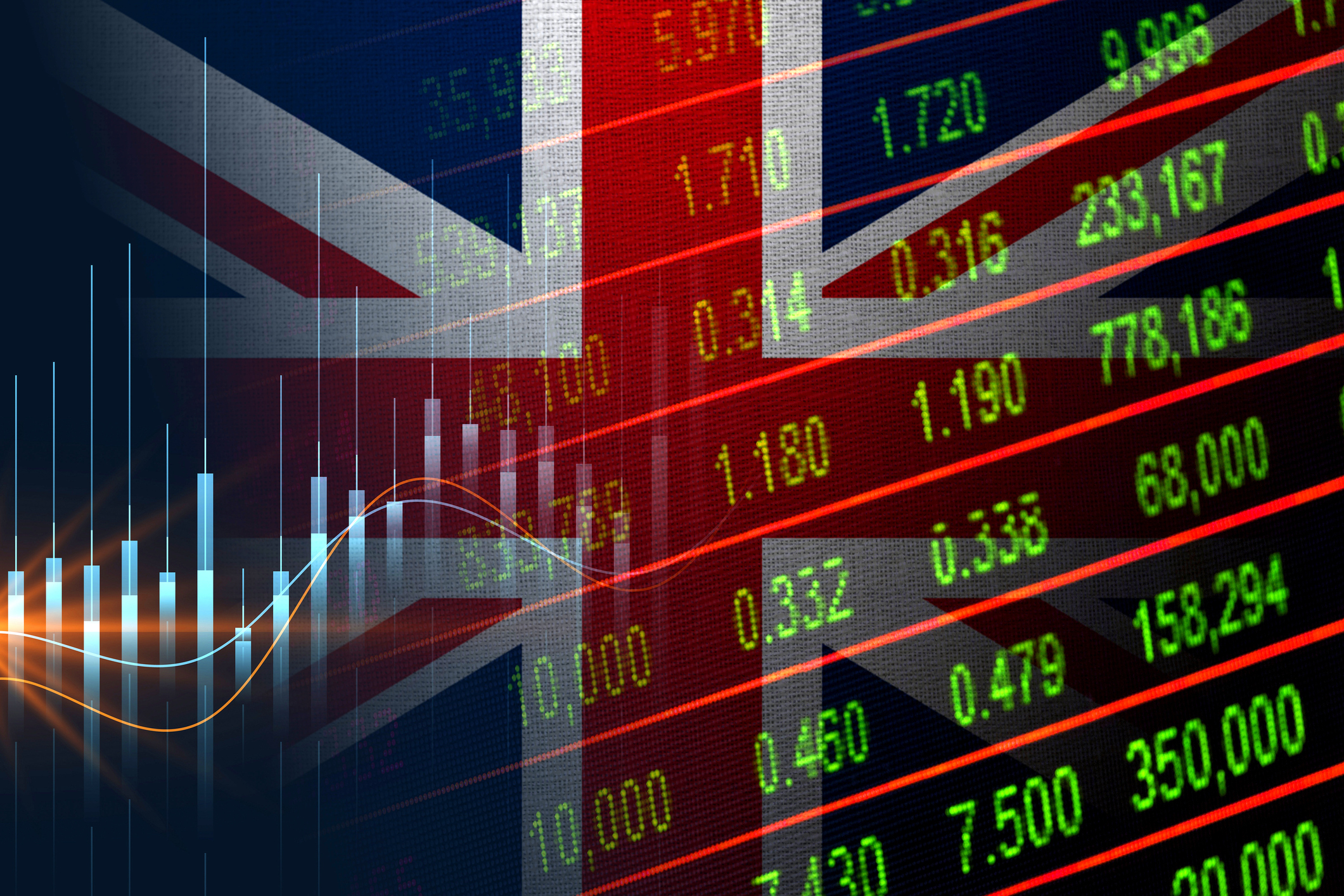Cash ISA cuts: millions of savers face £1,200 tax bill after five years
A combination of cuts to the cash ISA allowance and higher income tax on savings will deal a blow to savers as many could face a tax bill

Daniel Hilton

Savers will be up to £1,200 worse-off after five years once cash ISA reforms and new savings taxes are introduced, research suggests.
Chancellor Rachel Reeves used her Autumn Budget last week to reveal plans to cut the cash ISA allowance to £12,000 from April 2027 while also raising the income tax rate on savings by two percentage points, to 22% for basic rate taxpayers and 42% for higher earners from the next tax year.
The combination of both changes could be bad news for savers.
MoneyWeek
Subscribe to MoneyWeek today and get your first six magazine issues absolutely FREE

Sign up to Money Morning
Don't miss the latest investment and personal finances news, market analysis, plus money-saving tips with our free twice-daily newsletter
Don't miss the latest investment and personal finances news, market analysis, plus money-saving tips with our free twice-daily newsletter
Analysis by InvestEngine found that of the 7.1 million who contribute to cash ISA in 2022/2023, 2 million saved more than £12,000.
The investment platform’s research suggests that millions of savers could be affected as the remaining £8,000 they may have previously put in a cash ISA - the difference between the cash ISA and stocks and shares allowance - could end up being taxed in a mainstream savings account, even with the personal savings allowance.
Here is how savers could be affected once savings income tax rises in 2026 and the cash ISA allowance is cut in 2027.
The impact of cash ISA cuts and savings income tax hikes
InvestEngine’s analysis found that almost 1.5 million basic-rate taxpayers and 462,00 higher-rate taxpayers deposited more than £12,000 into their cash ISA in the previous financial year
But it won’t take much for the taxman to come knocking if cash ISA savers divert their money into savings accounts instead.
A basic rate taxpayer will see the income tax on savings rise to 22% from April 2027.
They still have a personal savings allowance of £1,000.
But if they put £8,000 into a savings account each year, earning the current typical rate of 4.5%, the personal savings allowance would be breached after the third year and they will have paid £264 of tax after five years.
Year | Total held outside ISA | Annual interest (4.5%) | Taxable interest (beyond £1,000) | Tax due (22%) | Cumulative tax paid |
1 | £8,000 | £360 | £0 | £0 | £0 |
2 | £16,000 | £720 | £0 | £0 | £0 |
3 | £24,000 | £1,080 | £80 | £18 | £17 |
4 | £32,000 | £1,440 | £440 | £97 | £114 |
5 | £40,000 | £1,800 | £800 | £176 | £290 |
It is worse for higher earners, who will face a 42% savings income tax rate and already have a reduced personal savings allowance of £500.
Higher earners saving £8,000 per year at 4.5% would breach the allowance after just two years and face paying £1,216 in tax after five years.
Andrew Prosser, head of investments at InvestEngine, said: “Our analysis shows that millions of savers regularly deposit more than £12,000 a year into cash ISAs.
"This cut to the allowance could push many into paying unnecessary tax on their savings interest."
Year | Total held outside ISA | Annual interest (4.5%) | Taxable interest (beyond £500) | Tax due (42%) | Cumulative tax paid |
1 | £8,000 | £360 | £0 | £0 | £0 |
2 | £16,000 | £720 | £220 | £92 | £92 |
3 | £24,000 | £1,080 | £580 | £244 | £336 |
4 | £32,000 | £1,440 | £940 | £395 | £731 |
5 | £40,000 | £1,800 | £1,300 | £546 | £1,277 |
How to protect your savings after the cash ISA cut
The cut to the cash ISA allowance will take effect in April 2027, with savers being allowed to put the full £20,000 tax-free limit in cash until then.
But after this date, those who still want to put that extra £8,000 into cash will have to get a bit more creative and look into alternative ways to protect their savings from the taxman.
Stocks and shares ISAs
The easiest way for savers to avoid a new tax bill is by investing instead in a stocks and shares ISA.
That may be easier said than done though, especially if you are uncertain about financial markets.
Nottingham Building Society found only 38% of cash ISA holders nationwide would consider switching to a stocks and shares ISA.
Harriet Guevara, chief saving officer at Nottingham Building Society, said: “Millions of savers rely on cash ISAs as a low-risk way to build financial stability. Two thirds of our cash ISA customers have used the full £20,000 allowance so far this year. These aren’t people with excess wealth - they’re individuals and families working hard to save for the future.
“What’s more, limiting cash ISA deposits is also at odds with this government’s own pledge to double the size of the mutuals sector, threatening to shrink mutual lending capacity, limit access to homeownership, and stall the long-term growth of building societies that reinvest in their members and local communities.
“If the government’s intention is to encourage more investment, these changes must go hand in hand with better financial education.”
Over the long term investing your money in a well-diversified portfolio tends to bring about higher returns than if you were to lock your money away in a savings account. Be aware, however, that the value of your investments can go up as well as down.
For more information, read our guides on saving vs. investing and how to start investing.
Premium Bonds
One of the UK’s most popular alternative savings vehicles is NS&I’s Premium Bonds. Unlike conventional savings accounts, money held in Premium Bonds does not earn a guaranteed interest rate.
Instead, for every £1 you have in Premium Bonds, you get one entry into the monthly Premium Bonds prize draw. Prizes range from £25 to £1 million.
Any money you win from Premium Bonds is entirely tax free, meaning if you are one of the lucky two people who wins the £1 million jackpot, you will be able to keep the entire amount.
You can save a maximum of £50,000 in Premium Bonds, but the drawback is that this money is not guaranteed to grow as you may not win every, or indeed any, month.
Laura Suter, director of personal finance at AJ Bell, said: “Currently based on the average chance of winning your average returns [from Premium Bonds] would be 3.6%. It’s less than the best rate you can get on traditional savings accounts, but for some the lure of winning big plus the tax-free prizes will be enough to attract their cash.”
Use fixed-term accounts
When you save money in a fixed-term savings account, you lock your money away to grow at a specific, fixed rate until the end of the specified term.
While you still have to pay tax on interest earned, this is not due until the end of your term. This means that if you time it right, you could defer the tax bill to another tax year.
This can be useful if you expect to drop into a different tax bracket in a future year, allowing you to have a lower tax rate on the interest your money earns.
Suter adds: “Equally it can be a good move if you’ve got lots of taxable savings this year, and so have already hit your tax-free limit, but may have less next year. It’s a good idea to track the savings accounts on a spreadsheet, so you don’t lose track of when they mature, or use a cash savings hub, so they are all in one place.”
Get the latest financial news, insights and expert analysis from our award-winning MoneyWeek team, to help you understand what really matters when it comes to your finances.

Marc Shoffman is an award-winning freelance journalist specialising in business, personal finance and property. His work has appeared in print and online publications ranging from FT Business to The Times, Mail on Sunday and the i newspaper. He also co-presents the In For A Penny financial planning podcast.
-
 Why UK investors are backing British stocks in 2026
Why UK investors are backing British stocks in 2026The UK stock market may be lacking fashionable technology shares but investors are keen to buy British next year
-
 UK inflation live: Inflation fell to 3.2% in November
UK inflation live: Inflation fell to 3.2% in NovemberA rise of 3.2% in CPI inflation in the 12 months to November undershoots almost all expectations